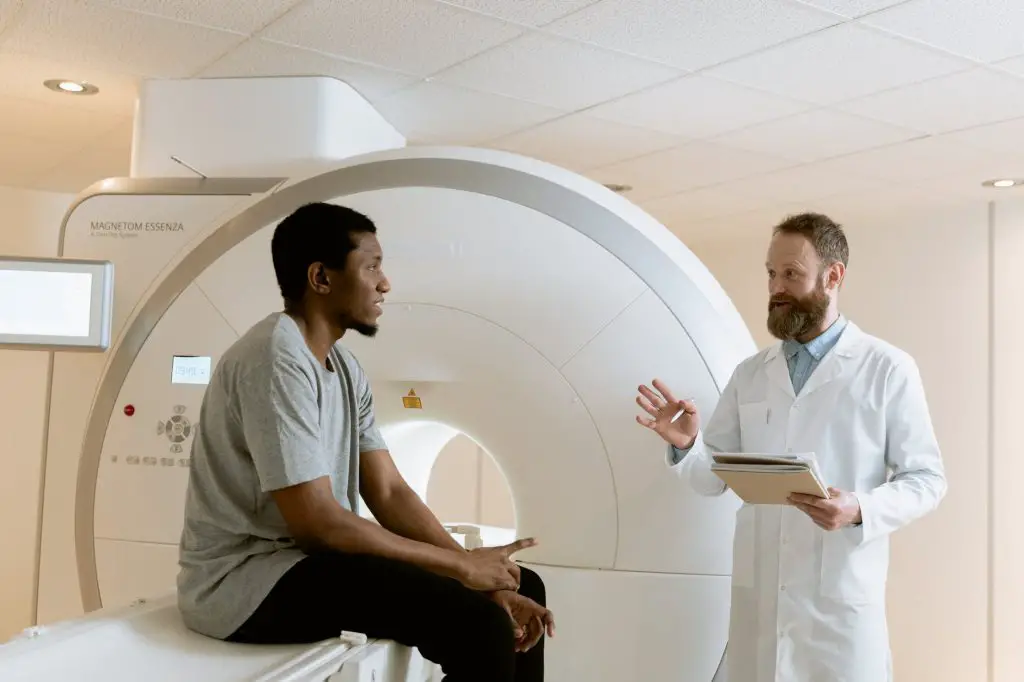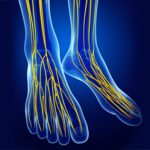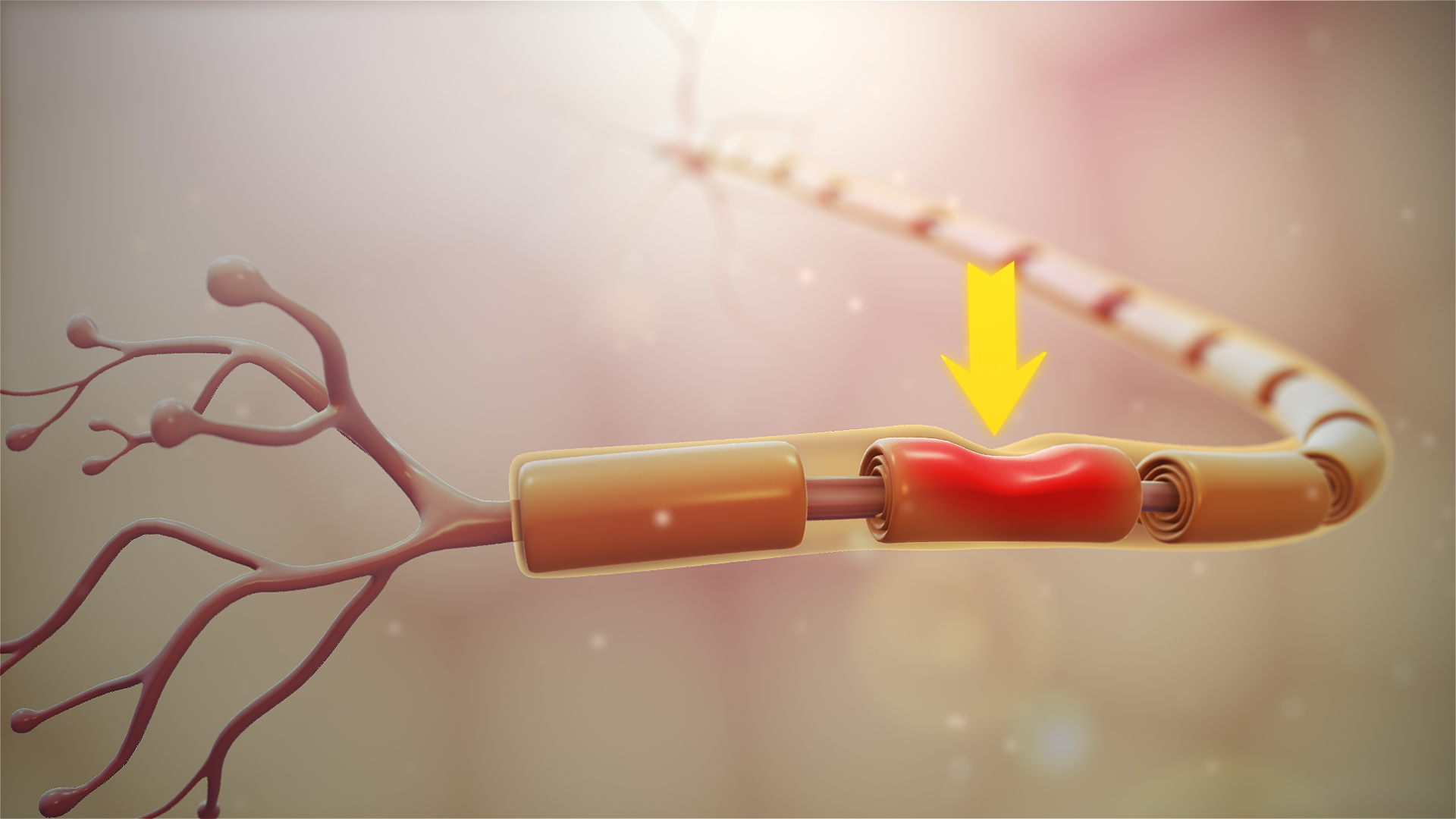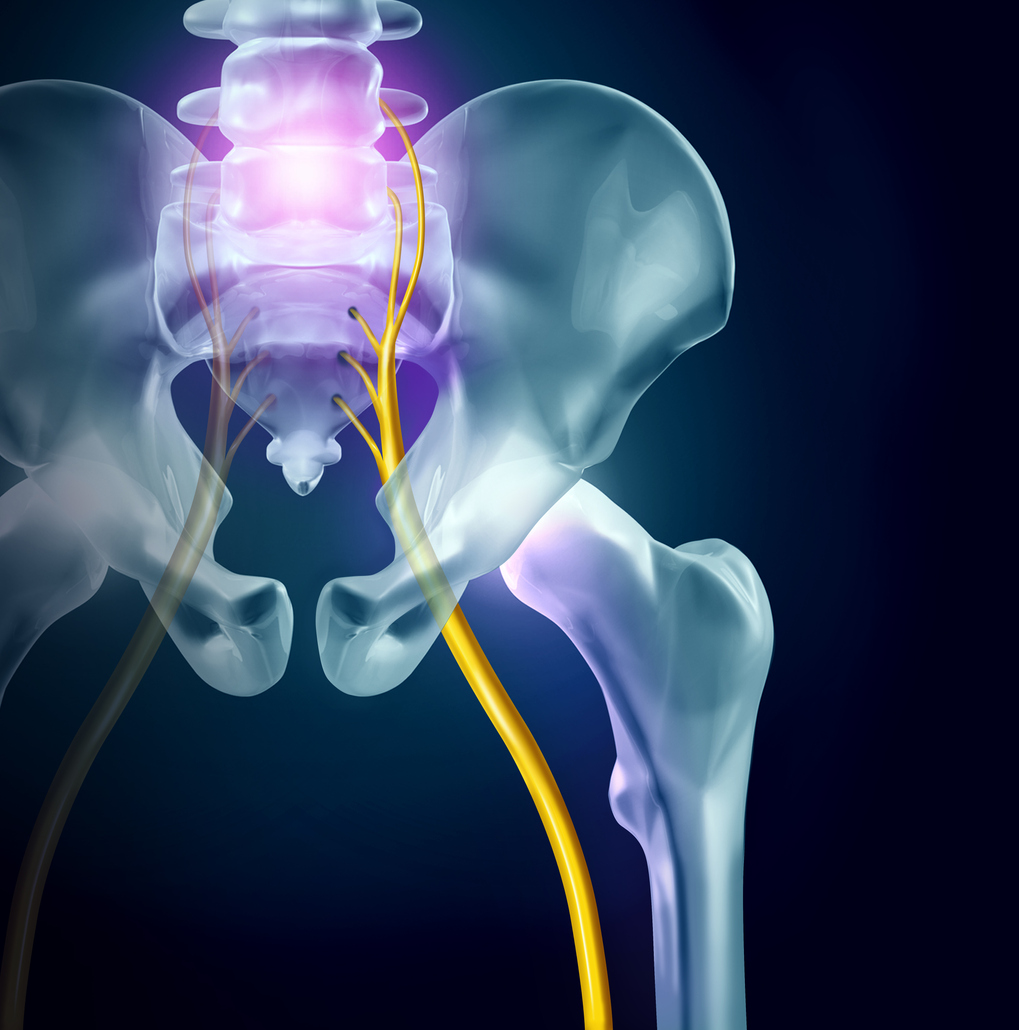The scanner of Lumbar spine and sciatica often go together. The main objective of the CT scan of the lumbar spine is to detect possible lesions that could cause compression on the nerve sciatica. In this article, we will see if the CT scan of the lumbar spine can help detect a sciatica. We will also discuss the different treatment options available to people who suffer from this condition.
Lumbar Spine Anatomy
La lumbar spine is composed of five vertebrae, which are the bones that make up the spine. The vertebrae are stacked on top of each other and are separated by intervertebral discs. These discs act as cushions between the vertebrae and help absorb shock.
La spinal cord crosses the vertebrae and transmits messages from the brain to the rest of the body. The lumbar spine is responsible for supporting most of the weight of the body and is therefore subject to heavy wear and tear. This can lead to degenerative changes in the spine.
The lumbar spine is also susceptible to injury, which can lead to pain and disability. It is important to understand the anatomy of the lumbar spine in order to maximize its function and prevent injury.
La sciatica : What is that ?
La sciatica is pain in the lower limb located in the path of the nerve sciatica. It is often associated with low back pain; we then speak of lombosciatica. Its main cause is a herniated disc, but lumbar osteoarthritis, trauma or inflammation can also be the cause.
Le nerf sciatica is the longest nerve in the body and runs from the lower back to the foot. The sciatica usually affects only one side of the body and can cause pain, numbness, or weakness in the leg. Depending on the severity of the sciatica, treatment may be limited to rest and over-the-counter medications.
However, in some cases, physical therapy or surgery may be necessary. If you suffer from sciatica, it is important to consult a healthcare professional to determine the best possible treatment.
what is a lumbar scan ?
Un lumbar scan is a diagnostic tool used to assess the health of the lumbar spine, which is the lower section of the spine. The exam uses X-rays to create a detailed image of the spine and can be used to diagnose a wide range of conditions, from degenerative disc disease spinal tumours.
Un lumbar scan is usually requested when a patient experiences back pain or other neurological symptoms that may be caused by a problem with the spine. In many cases, the lumbar scan Other tests, such as an MRI or CT scan, will be followed to confirm the diagnosis.
Le lumbar scan to diagnose a sciatica ?
Le lumbar scan is a valuable tool for detecting the main sources of sciatica :
A herniated disc
A herniated disc occurs when the soft inner core of the disc breaks through the tough outer layer. This can cause pain, numbness and tingling in the leg. the lumbar scan can detect a herniated disc by identifying displacement of disc material.
A zygapophyseal joint
A zygapophyseal joint is a joint between two vertebrae in the spine. These joints allow flexion, extension, lateral flexion and rotation. the lumbar scan can detect a zygapophyseal joint by identifying abnormal bone growth around the joint.
osteoarthritis
Osteoarthritis is a condition that results from the breakdown of cartilage in the joints. It can cause pain, stiffness and swelling in the joint. the lumbar scan helps identify osteoarthritis by spotting changes in the bone around the joint.
The narrowing of the spinal canal
Also called narrow lumbar canal ou spinal stenosis, narrowing of the canal occurs when there is too much bone or ligament tissue around the spinal cord. This can put pressure on the spinal cord and cause symptoms such as pain, numbness, tingling, and weakness.
Le lumbar scan can identify a narrowing of the canal by spotting an increase in bone or ligament density around the spinal cord.
Spinal injuries
Spinal injuries are injuries or tumors that occur on or near the spinal cord. These injuries can put pressure on the spinal cord and lead to symptoms such as pain, numbness, tingling, and weakness. the lumbar scan can identify spinal injuries by finding abnormal tissue around or near the spinal cord.
Can imaging alone explain the patient's condition?
In many cases, a doctor will prescribe a lumbar scan or another imaging test to help diagnose the condition. While imaging tests can be helpful in diagnosing sciatica, they cannot always explain the patient's symptoms. For example, a patient may have a herniated disc but feel no pain.
Indeed, not all patients suffering from a herniated disc feel pain. Similarly, a patient with spinal stenosis may have no symptoms. Therefore, while imaging tests are important for the diagnosis of sciatica, they should not be used alone to determine the patient's condition.
Scanner or MRI, which is the most conclusive imaging?
Le lumbar scan is the initial test used to diagnose a sciatica. If the results are inconclusive, or if the doctor needs more information, they may opt for an MRI. The latter is more accurate than the lumbar scan and can provide detailed images of the spine and surrounding structures.
Also, MRI can be used to rule out other conditions that may cause similar symptoms, such as a herniated disc or spinal stenosis. Ultimately, MRI is a more sensitive test than lumbar scan and is usually the best option for diagnosing a sciatica.











